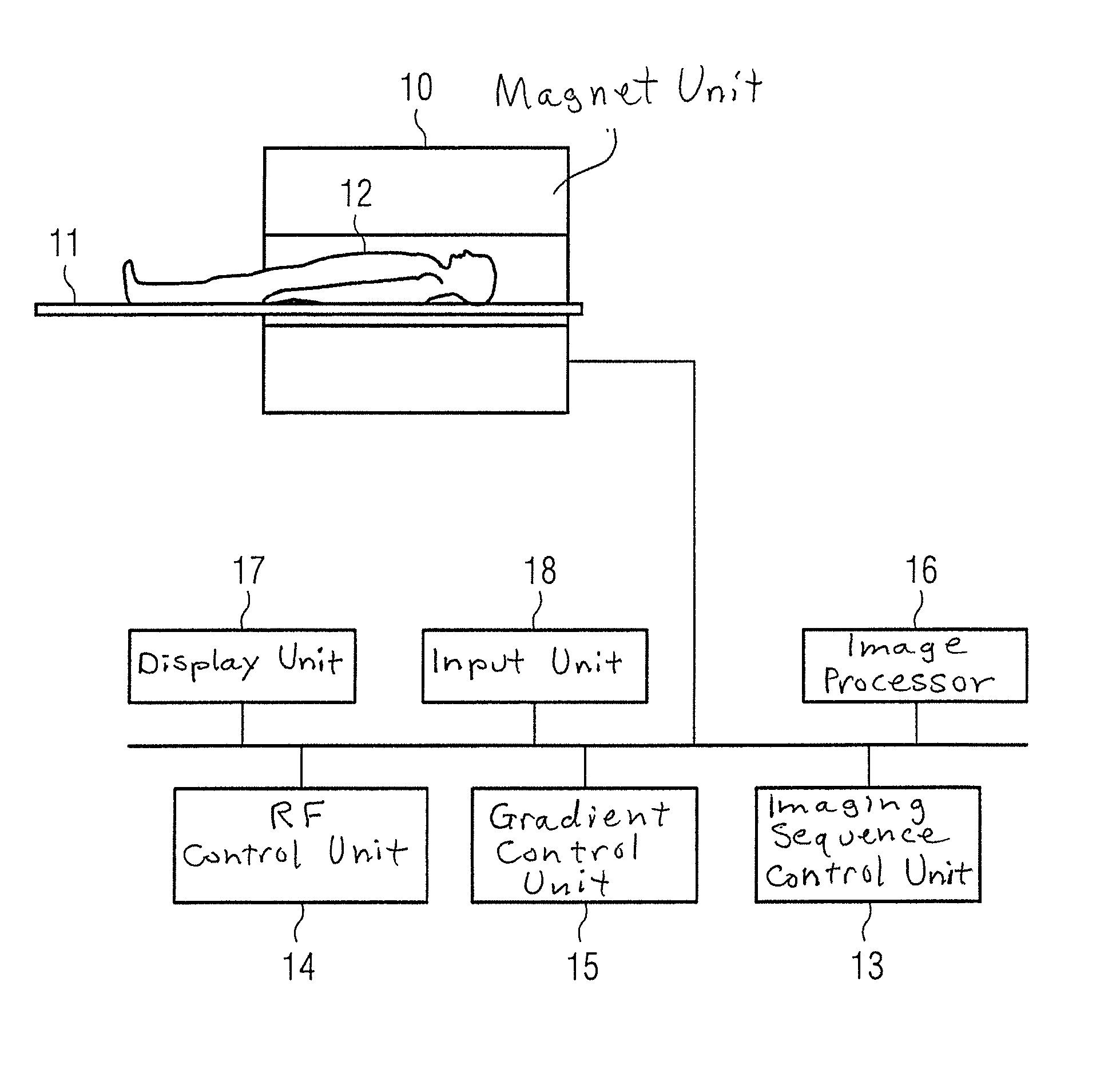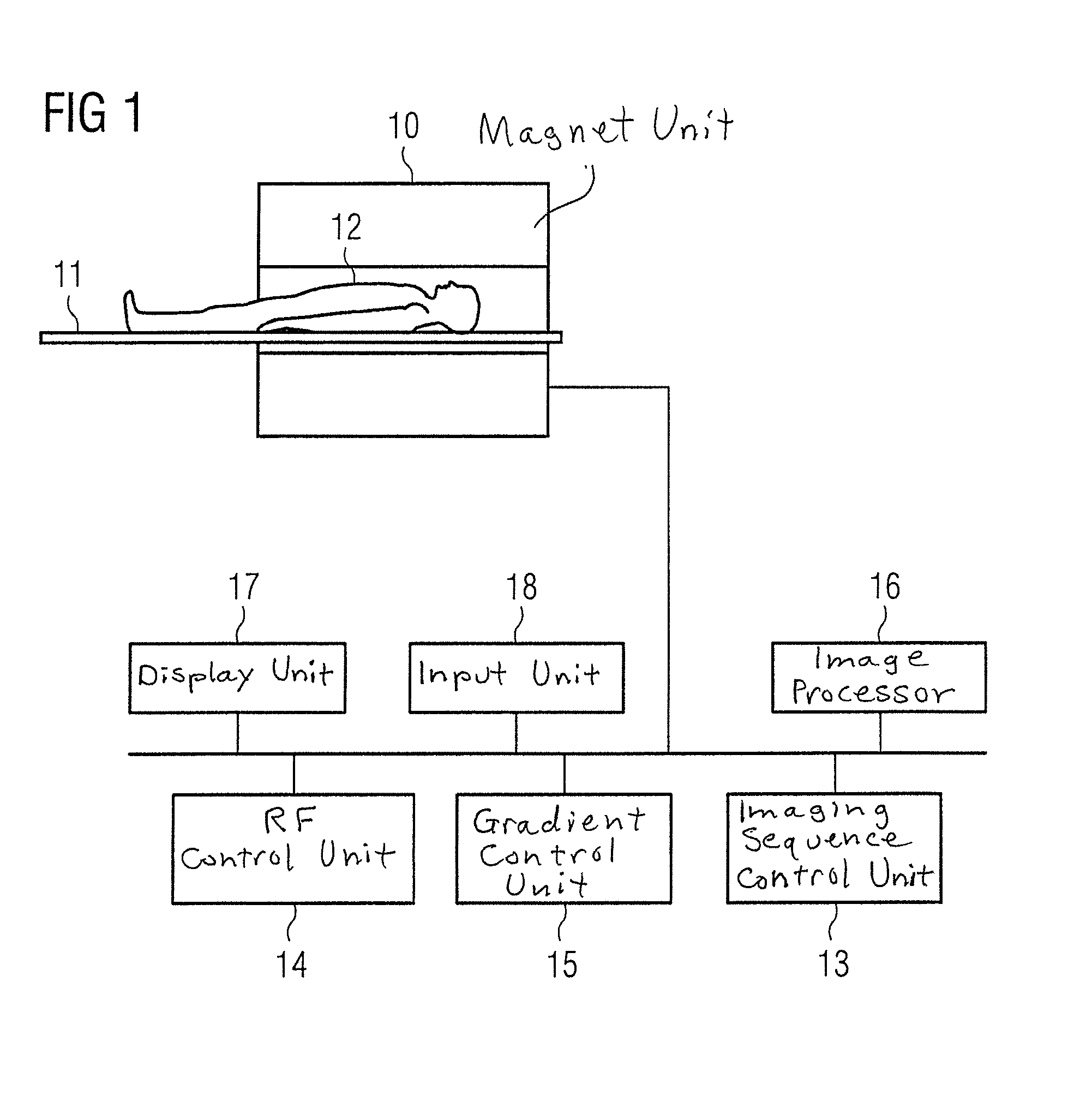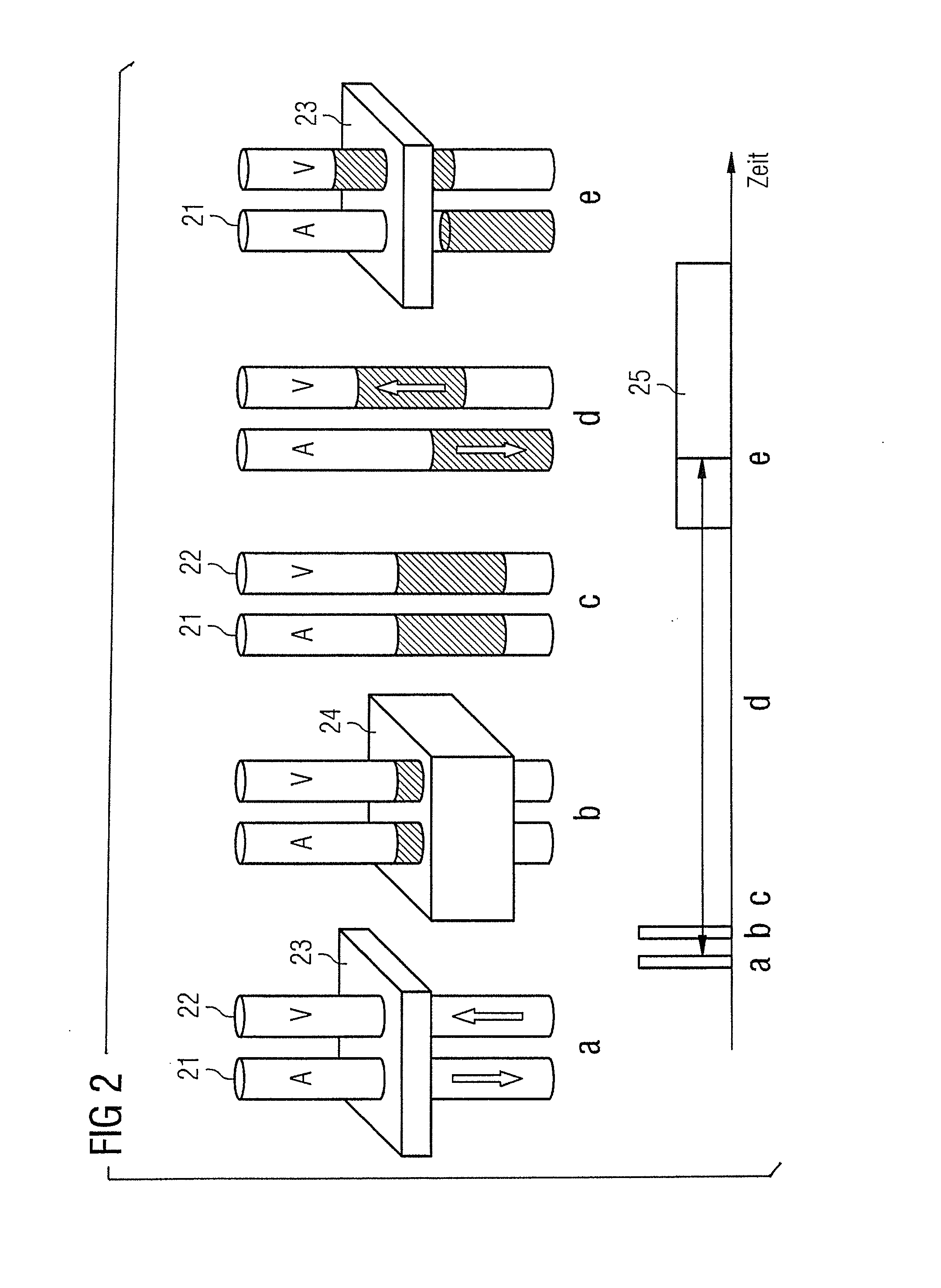Mr-angiography with non-cartesian signal acquisition
a signal acquisition and angiography technology, applied in the field of angiography with non-cartesian signal acquisition, can solve the problems of tr, more striking limitation, and significantly shorter distance traveled by the blood during the remaining weak pulse wave, and achieve good spatial resolution
- Summary
- Abstract
- Description
- Claims
- Application Information
AI Technical Summary
Benefits of technology
Problems solved by technology
Method used
Image
Examples
Embodiment Construction
[0034]An MR apparatus is depicted schematically in FIG. 1, with which an MR angiographic image having a good spatial resolution in all three spatial planes can be created in an acceptable measurement time period. The MR apparatus has a magnet 10 for generating a polarization field BO. An examination subject 12 placed on a bed 11 is moved into the magnet 10. The magnetization present in the examination subject can be tipped out of equilibrium by irradiating the patient with radio-frequency pulses. The relaxation processes occurring after the irradiation with RF pulses can be detected by coils, not shown in FIG. 1. For the spatial encoding of the detected signals, magnetic field gradients are superimposed on the basic magnetic field by gradient coils (not shown) in order to obtain a spatial connection of the detected signals. The method in general, with which MR images can be generated by means of a sequence of emitted RF pulses, and the activation of magnetic field gradients, is know...
PUM
 Login to View More
Login to View More Abstract
Description
Claims
Application Information
 Login to View More
Login to View More - R&D
- Intellectual Property
- Life Sciences
- Materials
- Tech Scout
- Unparalleled Data Quality
- Higher Quality Content
- 60% Fewer Hallucinations
Browse by: Latest US Patents, China's latest patents, Technical Efficacy Thesaurus, Application Domain, Technology Topic, Popular Technical Reports.
© 2025 PatSnap. All rights reserved.Legal|Privacy policy|Modern Slavery Act Transparency Statement|Sitemap|About US| Contact US: help@patsnap.com



